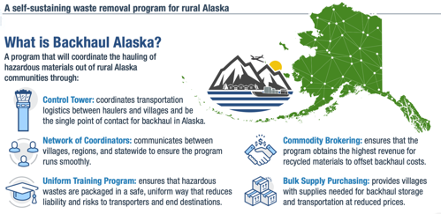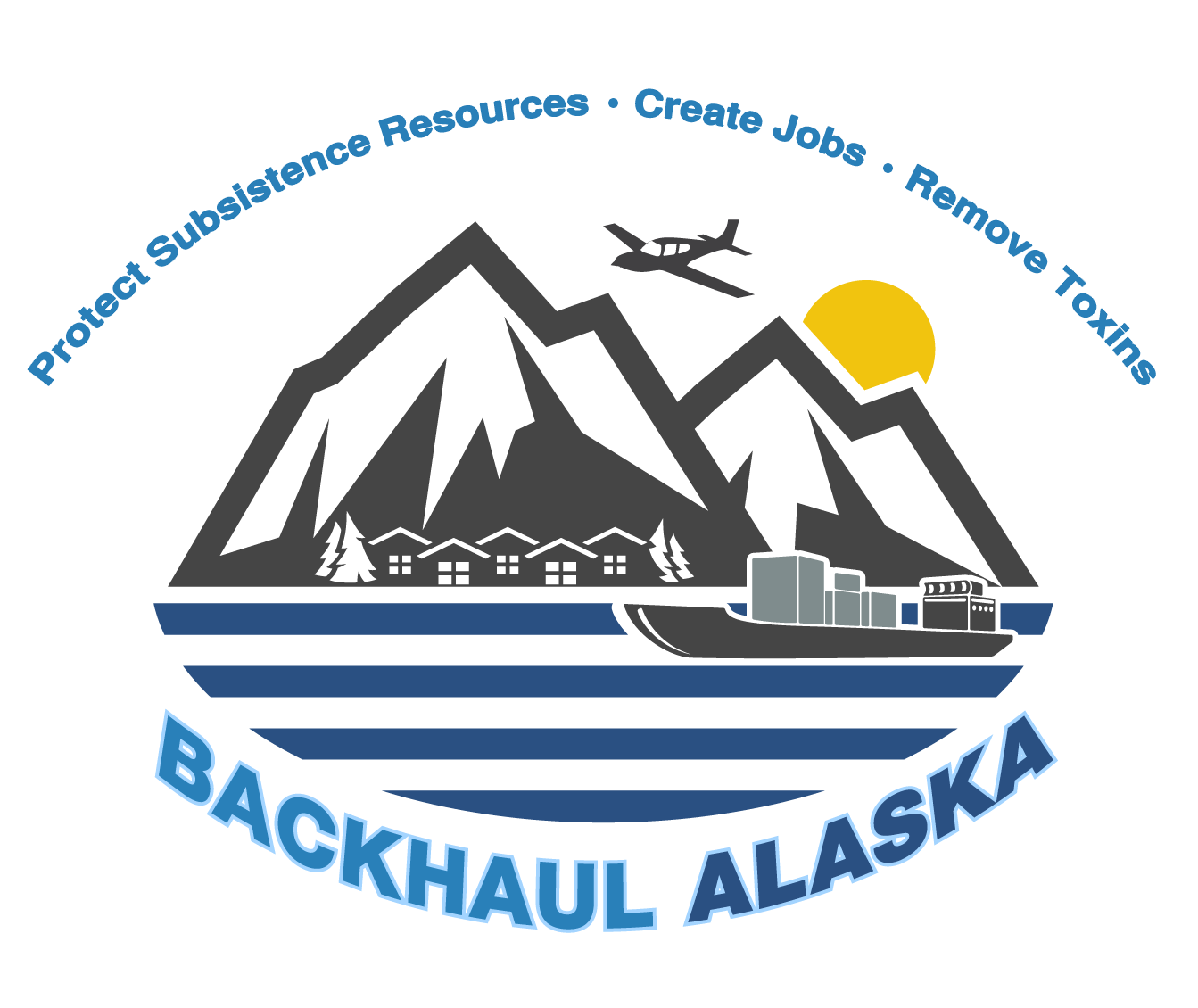What is Backhaul Alaska?
Backhaul Alaska coordinates the removal of harmful waste from rural Alaska communities to Lower-48 destinations where it can be safely discarded or recycled. This process ensures responsible recycling and returns recyclables to the World’s Circular Economy. It builds local community capacity to safely handle the waste via training, supply provision, and regional assistance.
Why is Backhaul Alaska Needed?
There is no safe way to discard harmful wastes in rural Alaska, and backhauling out of communities is expensive and logistically difficult. A well-coordinated statewide backhaul program reduces risks to human health and the environment, stretches rural communities’ limited dollar, and protects subsistence resources.
What’s the Timeline for Backhaul Alaska?
A Pilot Program operated from Summer 2018 – December 2021. It collected electronics (e-waste), lead acid batteries, and fluorescent light bulbs from 26 communities.
We have now entered the initial implementation phase and are in the process of rolling out to additional communities. We will expand to all of rural Alaska over a ten-year timeline. The Program now includes fish nets and is piloting other materials.

Did You Know?
Many of Alaska’s small communities are remote, isolated, and accessible only by boat or plane. Because of their remote and isolated location, these communities use unlined landfills without leachate treatment and burn wastes without emissions treatment. They are the only communities in the country allowed to do this by law. These conditions result in harmful contaminants released to the local environment that Alaskans depend on for subsistence foods and water. Because most landfills are close to communities, residents can additionally breathe toxic smoke from burning practices. To be safe, hazardous wastes must be backhauled out by barge or plane.
How Does the Program Work?
Individual communities have had to bear the burden of trying to operate backhaul on an individual level, straining limited funds and resources. Backhaul Alaska backhauls waste cheaper and more efficiently because:
- Each region has a single point of contact for their communities
- Each community is trained in streamlined and uniform protocols
- Every rural waste generator contributes to the program
- Innovative efforts to reduce, reuse, and refuse spent materials are encouraged
- A “control tower” coordinates regional contacts and optimizes material transport and price brokering
- Transporters and recyclers spend less time and incur less liability risk
In time, Backhaul Alaska will operate as a full management service for any entity generating waste in rural Alaska.

For greater detail, click here to access the Backhaul Alaska draft plan.
Explore Backhaul Alaska
Use the navigation below to learn more about Backhaul’s history, current events, and how to join our cause!
